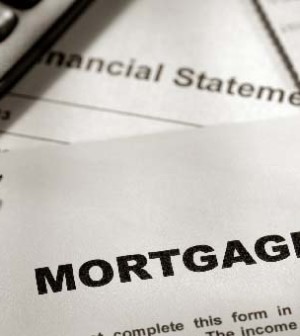- 4 Unexpected Things I’ve Learned From Buying My First Mobile Home Park
- How Ironic: America’s Rent-Controlled Cities Are Its Least Affordable
- U.S. homes are still a bargain on the international market
- Getting The Best Possible Quality Photos On MLSs and Syndicated Sites
- Home buyers in these markets have the upper hand
5 Tips for Buying Mortgage Notes

Investing in mortgage notes carries many similarities to investing in real estate. An investor uses many of the same methods, taking into considering the location of the property, the amount of the loan, the terms of the note, the loan to value, and the position of the lien. Here are some tips to help you choose the best notes for your investment strategy.
- Position of Lien
A first lien position is ideal. However, some mortgage investors buy second or third mortgages. The lien priority or position of a lien is an important consideration for every mortgage note investor.
If a borrower stops making payments, the first lien position holder will either renegotiate the terms or foreclose. If you’re in the first position and know that the fair market value of the property equals or exceeds the loan amount, you get your investment back. However, if you are in a second or third position, the game changes.
If a borrower stops making payments, the first lien holder can renegotiate the terms (not likely if the lender is a bank or mortgage company) or foreclose. If you are in a second or third position, the property is sold at a foreclosure sale and the proceeds satisfy the first note holder’s loan balance, but there is not enough money derived from the sale, your note could be wiped – you get nothing.
As a second or third mortgage holder, you have options. You can legally protect your investment by offering to pay the first note holder the amount in arrears. Whether or not this is a good investment strategy does not have a broad interpretation. It would be a decision made based on all the elements involved in the investment.
- Loan to Value
Determine the loan to value ratio by dividing the loan amount by the fair market value or appraised value of the property. Be sure to consider any second or third liens against the property in your calculation.
Loan Amount: $100,000
No other liens
Current Market Value: $125,000
The loan to value is 80%.
The value of the property must exceed the loan amount by an acceptable margin. This is where you will use your level of risk as an investor to determine if the LTV meets your criteria.
The value of the property must equal or exceed (preferably exceed) the loan amount.
If you are considering buying a mortgage note for $100,000 in a first lien position, if the borrower defaults, you foreclose and all the proceeds are applied toward your note. However, if you are considering buying a note that places you in a second or third lien position, the LTV ratios, terms and interest rates of underlying loans are eve more important.
- Location of The Property
The location of the property is just as important in investing in mortgage notes as it is buying real estate. The property or collateral secures the note. Should the borrower fail to perform, your options are to contact the borrower to renegotiate the terms or foreclose. The location of the property should be in an area with a history of a healthy appreciation rate and overall stable economy with a good potential for future growth.
- Loan Amount
The loan amount is another important consideration when buying mortgage notes. As you know, mortgage notes are amortized. That’s one of the main benefits of investing in mortgage notes – amortization and compound interest.
An investor finds a note for $150,000, 7% interest, 15 years remaining on the loan or note with monthly payments of $997.95.
Loan: $150,000
Term: 15 years remaining
Interest: 7%
The rate of return or ROI is important. For the investor who is concerned with creating a high monthly passive income strategy, this note might not be the best choice. If that’s the case, the investor would look search for notes that carry a higher monthly payment and be willing to accept a reduced ROI.
Diversification is a function of the loan amounts. You have a certain amount of cash you want to invest. If you have $150,000 to invest, you might want to consider investing $50,000 in three mortgage notes or perhaps two mortgage notes for $75,000 each. If you have $500,000 to invest, it’s wise to use the same strategy, diversify your investments. The loan amount is just as important as the terms of the loan.
- Loan Terms
Loan terms vary from the traditional fixed rate 30-year loan to ARMs, loans with a balloon payment, interest only loans and more. There are many loan products available and the type of loan will be a factor in determining whether or not you want to buy a note.
What is the interest rate?
What are the repayment terms?
Is there a balloon payment due?
Are payments interest only?
The interest rate alone does not determine if the note investment opportunity is good. The repayment terms are also important. If a balloon payment is due in the next year or so, that might not be a good investment. If the balloon is due five years from now, it might be a good investment. With this scenario (a balloon due in five years), you can expect to be repaid in full in five years while enjoying monthly payments in the interim.
Interest only payments are also an attractive option for mortgage note investors. Borrowers who make interest only payments are paying for the right to borrow money which means all the payments you receive are applied toward interest, your profit.
Understanding the terms of the loan will help you make an informed decision about investing in mortgage notes. It’s important to know that the property is equal to or exceeds the note value.
Investing in mortgage notes carries many similarities to traditional real estate investments. As with any real estate investment, it is prudent to diversify your portfolio. In the mortgage note investment business, it’s wise to continually buy mortgage notes. Why? Because when one of your notes is paid off or stops performing, you will have other notes that are performing.
Before you buy a mortgage note, research the location of the property, the amount of the loan, the terms of the note, the loan to value, and the position of the lien. Find notes that are in keeping with your investment criteria and meet your level of risk.




 100% Secure
100% Secure
You must be logged in to post a comment Login